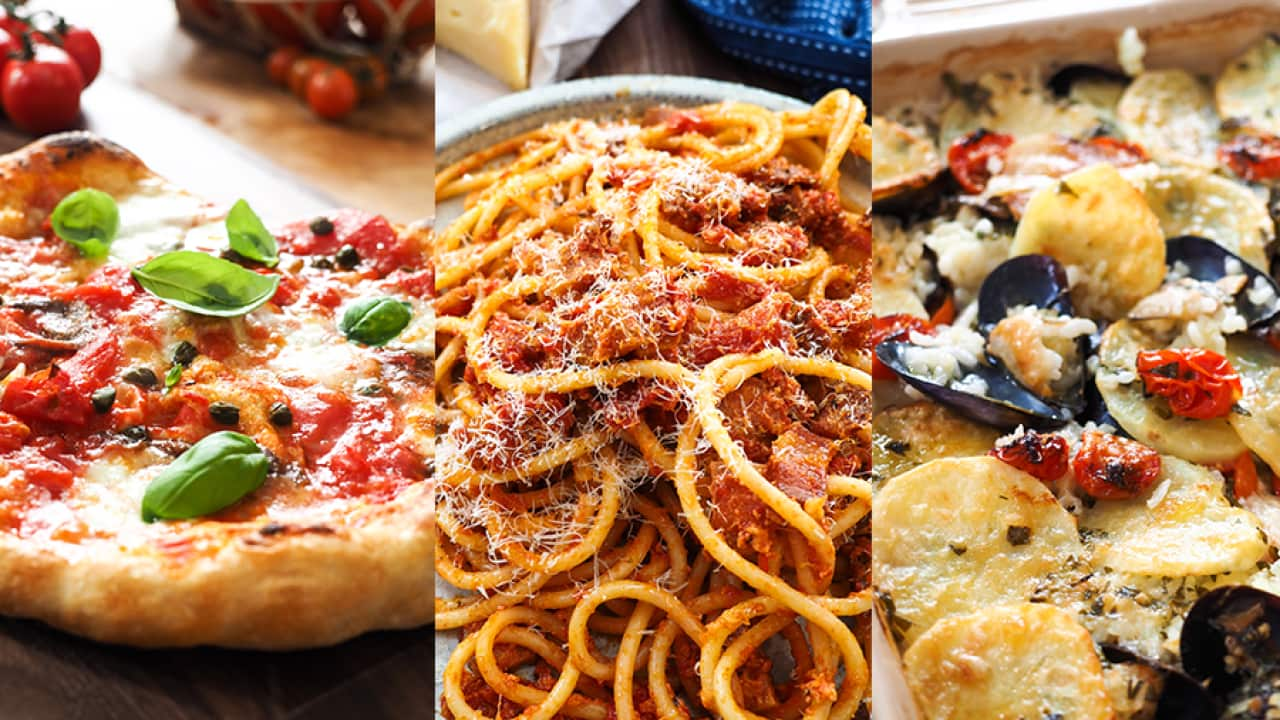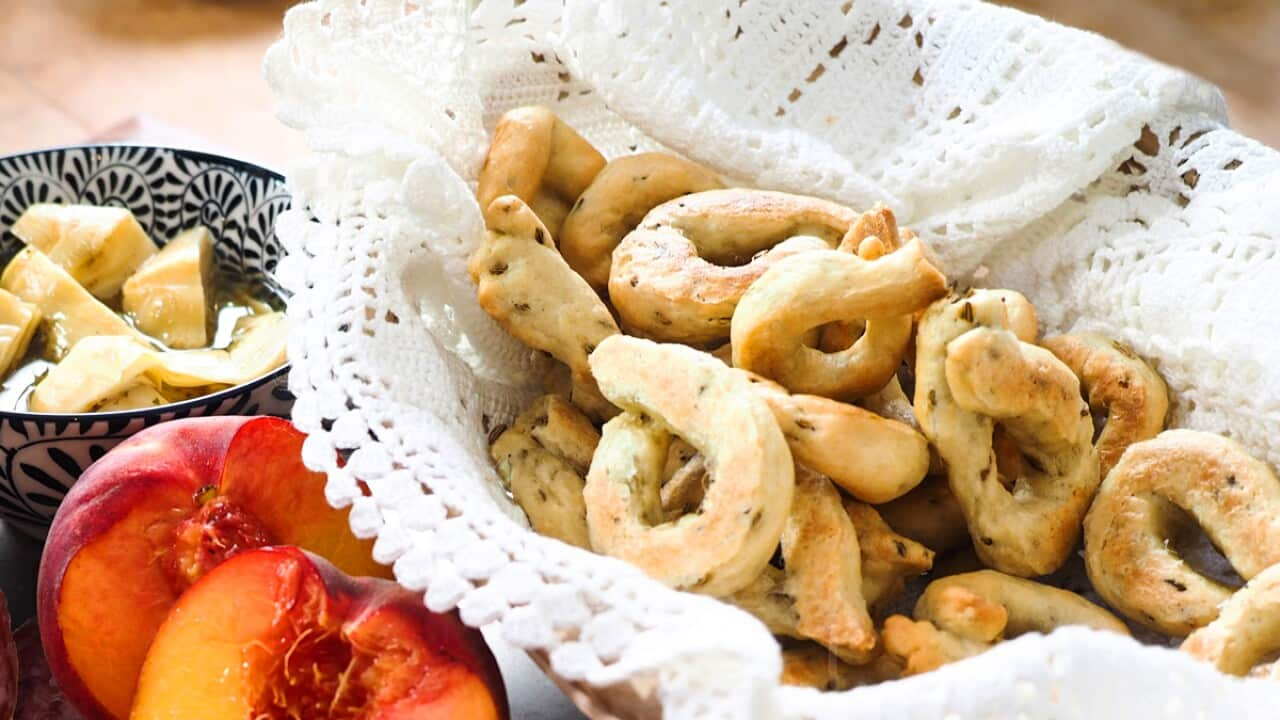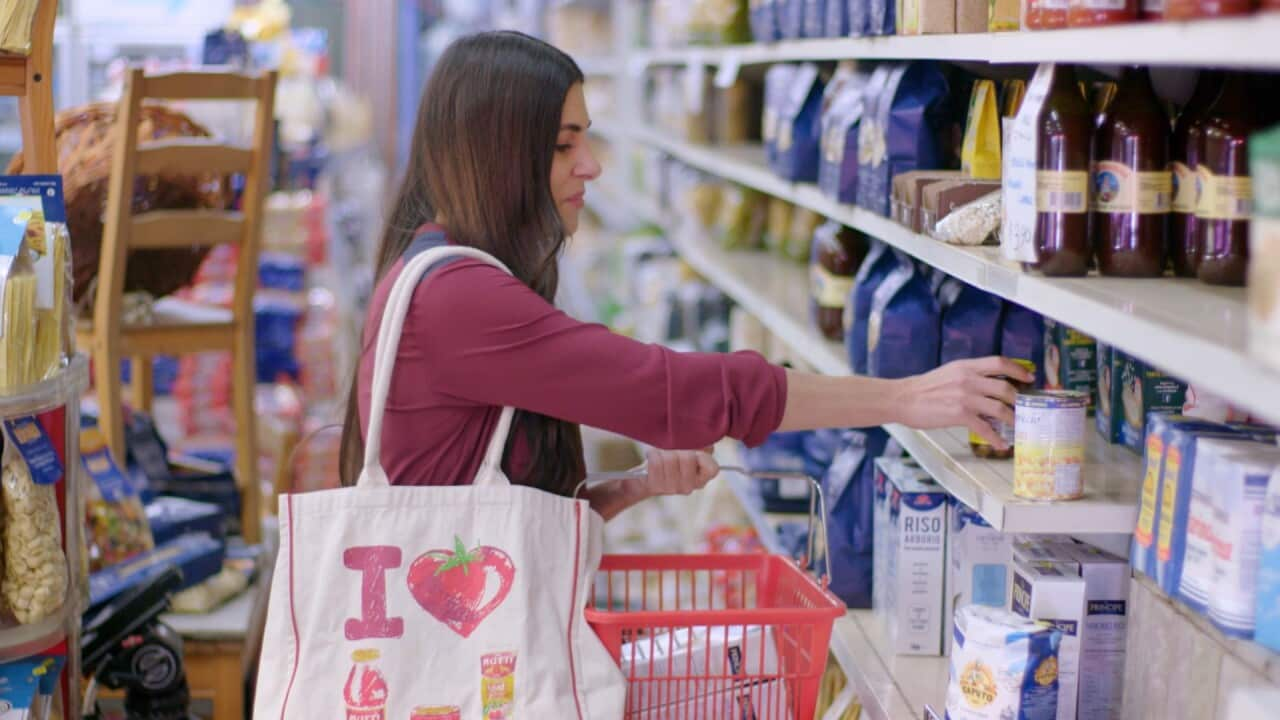After making them for more than 65 years, Giovanni Viscione knows a lot about taralli, the crunchy, flaky little rings that are one of Italy’s favourite snacks.
“To make the perfect taralli you need an abundance of amore (love) and passion!” says Viscione, who learned to make bread and taralli as a 12-year-old alongside his father, Pasquale Viscione, in the family-owned bakery and pizzeria in San Marino, Italy.
“My father taught me the technique to kneading the perfect dough with the family recipes, which were passed on by his grandparents.”

Giovanni Viscione has been baking taralli since he was a boy Source: Taralli Continental Biscuits
“A traditional antipasto should always have something crunchy and taralli crackers are famous all over Italy for their beautifully perfumed flavour of white wine, olive oil and fennel seeds. But I warn you, they are very addictive,” says Silvia Colloca, host of Cook Like an Italian.
“And the good news is that they are quite easy to make.”
Start with great ingredients
You need “quality ingredients: fresh herbs and spices, white wine and extra virgin olive oil,” Viscione says.
After migrating to South Australia in the 1960s, he started a small home bakery, which marked the humble beginnings of his family business, based in Magill, SA.
Viscione still overseas production; his daughter Sonia Bruno is now the company’s national sales and marketing director; and a third generation is involved in the baking side of the business. Demand for the bakery’s taralli, tarallini (a bite-sized version) and sweet Italian biscuits mean they are sometimes producing more than 250 kilograms of biscuits an hour.
“We pride ourselves on using premium ingredients, sourced from local suppliers,” Bruno says. “We use premium first pressed olive oil – so no palm oil or vegetable oil - premium wheat flour that is grown and milled in SA and fresh herbs and spices. When you bite into our products, you can actually taste the ingredients.”
The olive oil is particularly important, says Colloca.
“The wine and the olive oil and the fennel, they all combine to create the most beautiful morsel … The key ingredient is olive oil. If you can, get your hands on a really full-bodied olive oil, you really want that flavour.”
Of course, as with any traditional recipe, there are many variations. Luciana Sampogna’s taralli napoletani recipe, for example, is yeasted, and made with lard instead of oil (get the recipe and watch her make them ).

Luciana Sampogna's taralli napoletani Source: Italian Food Safari
Let it rest
To make Collloca’s taralli, the crucial step after making the dough is to let it rest for 20-30 minutes.
“The gluten needs to relax after you knead a dough … it’s going to be a lot easier to handle and you can see how soft and beautiful it is,” she says.
Shape into rings
“There’s nothing fancy about this,” says Colloca. And she’s right – it’s as easy as rolling pieces of dough into thin ropes and forming them into loops, one end laid over the other.
Boil and bake
“The texture is quite magnificent for a number of reasons. Because the olive oil in the dough makes it really flaky, but also because this is twice-cooked,” Colloca explains. “The poaching and the baking give it its characteristic texture.”
The Visciones boil and bake theirs too, while Sampogna’s yeasted version is just baked, but with the temperature lowered twice during baking, to create crisp, golden biscuits.
Snacking and serving
“When I’m entertaining friends, one of my favourite Italian food traditions is a really good antipasto plate,” says Colloca. It’s traditionally served with crackers, grissini or bread, she says – or, of course, taralli!

Silvia Colloca's taralli and antipasto Source: Cook Like an Italian
On the sweeter side
We can’t talk about taralli without mentioning the sweet version – some with icing, some without (like these festive ). Versions made with lemon are common – give them a try in Paola Bacchia’s recipe for soft, sweet .

Lemon taralli (taralli al limone) Source: Paola Bacchia
Find Silvia Colloca sharing family secrets from her very own kitchen in Cook Like an Italianat . Head to for recipes, articles, tips and more.
Like an Italian

Eat like an Italian: Italy's three edible national treasures









